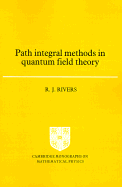Book contents
- Frontmatter
- Contents
- Preface
- 1 Scalar Green functions and their perturbative solutions
- 2 Connected Green functions and their one-particle irreducible components
- 3 Regularisation and renormalisation
- 4 The scalar functional integral
- 5 Series expansions and their summation
- 6 Taking the path integral more seriously
- 7 Quantum theory on non-simply-connected configuration spaces
- 8 Stochastic quantisation
- 9 Fermions
- 10 Quantum electrodynamics
- 11 Non-Abelian gauge theories
- 12 Explicit symmetry breaking and its classical limit
- 13 The effective potential
- 14 Field theory at non-zero temperature
- 15 Field theory at non-zero temperature: real-time formulation
- 16 Instantons
- 17 Composite fields and the large-N limit
- References
- Index
- Frontmatter
- Contents
- Preface
- 1 Scalar Green functions and their perturbative solutions
- 2 Connected Green functions and their one-particle irreducible components
- 3 Regularisation and renormalisation
- 4 The scalar functional integral
- 5 Series expansions and their summation
- 6 Taking the path integral more seriously
- 7 Quantum theory on non-simply-connected configuration spaces
- 8 Stochastic quantisation
- 9 Fermions
- 10 Quantum electrodynamics
- 11 Non-Abelian gauge theories
- 12 Explicit symmetry breaking and its classical limit
- 13 The effective potential
- 14 Field theory at non-zero temperature
- 15 Field theory at non-zero temperature: real-time formulation
- 16 Instantons
- 17 Composite fields and the large-N limit
- References
- Index
Summary
When we first considered stationary-phase and saddle-point calculations in chapter 5, we assumed (correctly) that the solutions to δS[A]/δA = 0 and δSE[A]/δA = 0 of finite action were constant configurations Ac. However, there are circumstances when the extrema are non-trivial (i.e. non-constant).
In this chapter we shall examine some simple examples of saddle-point calculations, for the generating functional ZE, about non-trivial Euclidean configurations. (The saddle-point calculations of section 5.5 for large-order terms in the ħ expansion of ZE also involved non-trivial extrema. However, here we are talking about calculations of ZE itself.) Such configurations are termed instantons ('t Hooft, 1976) or pseudoparticles (e.g. see Polyakov (1977)). We shall use the former name since they play no role as classical precursors of particles. Rather, their main application is in quantum tunnelling in one aspect or another.
It is for this reason that we have introduced instantons now, rather than earlier. We have two applications in mind. The first, and a major use of these ideas, is in early universe calculations, for which the discussion of the previous two chapters has provided a background. Our second application, the θ-vacua of non-Abelian gauge theories, is not motivated by non-zero temperature effects, but is expressed through the same tunnelling tactics.
- Type
- Chapter
- Information
- Path Integral Methods in Quantum Field Theory , pp. 289 - 308Publisher: Cambridge University PressPrint publication year: 1987



